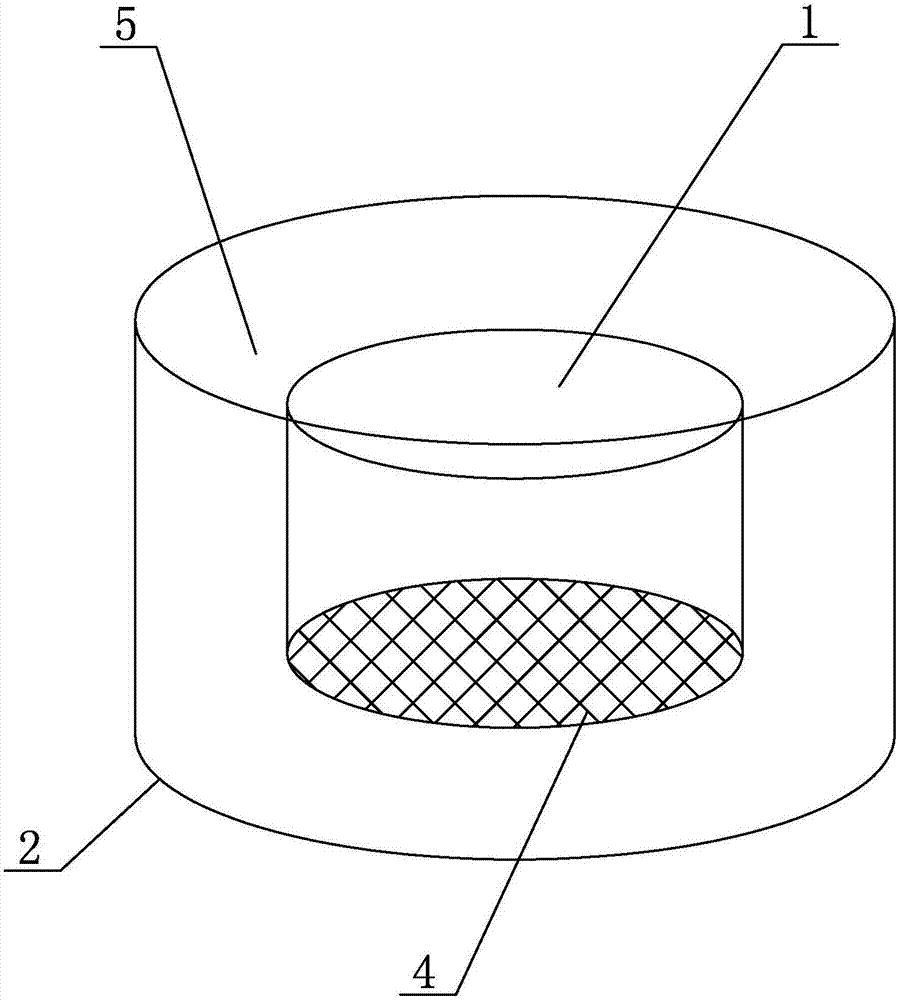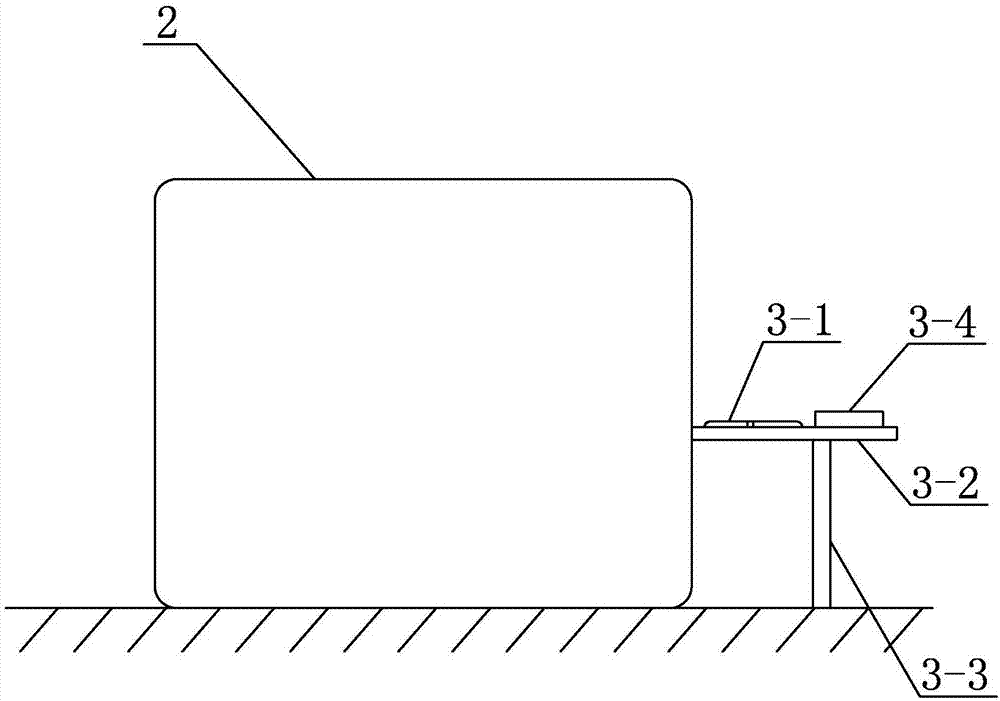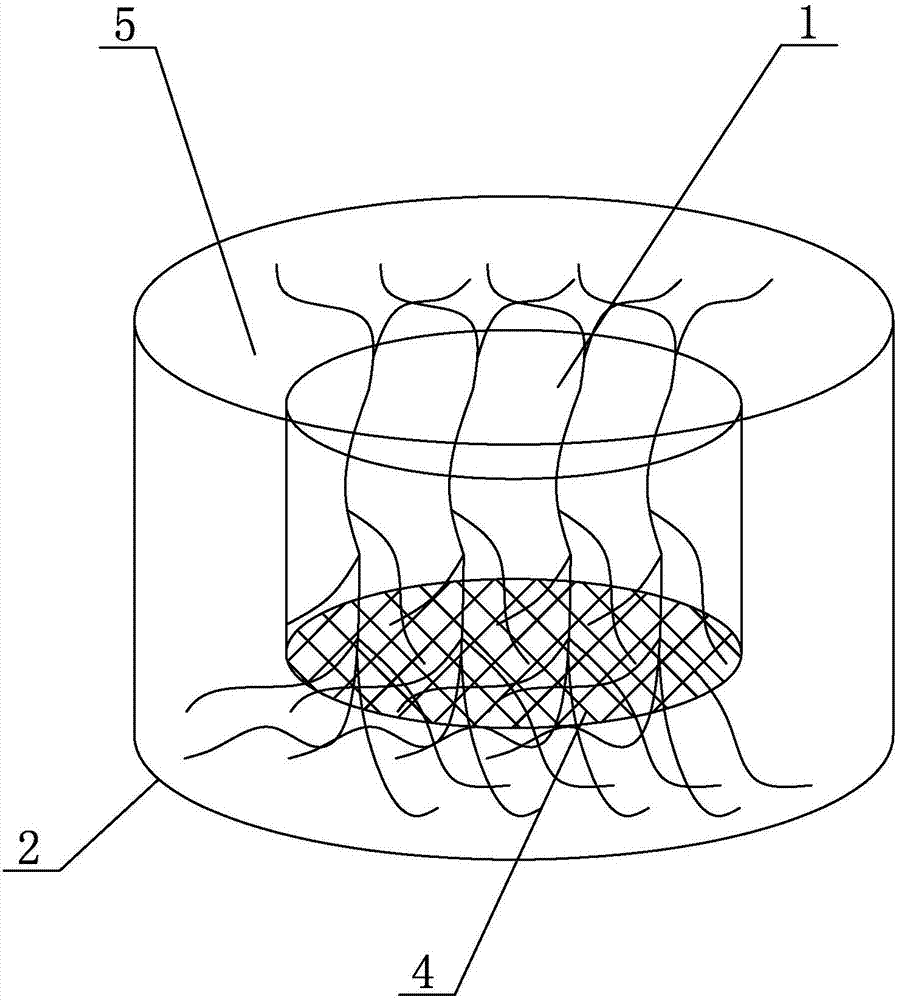Device and method for extracting in situ root exudates of arbuscular mycorrhizal plants
A technology of root exudates and plant roots, which is applied in the field of devices for in-situ extraction of arbuscular mycorrhizal plant root exudates, can solve problems such as differences and difficulty in ensuring integrity, and achieve convenience in use, integrity protection, and simplified operation The effect of steps
- Summary
- Abstract
- Description
- Claims
- Application Information
AI Technical Summary
Problems solved by technology
Method used
Image
Examples
specific Embodiment approach 1
[0025] Specific implementation mode one: combine figure 1 and figure 2 Describe this embodiment, present embodiment comprises container 1 for substrate and external culture container 2, the top of external culture container 2 is an open end, the inside of external culture container 2 is provided with container 1 for substrate, external culture container 2 and external culture container 2 are used for substrate. A ring cavity 5 is formed between the containers 1, and a nutrient solution is arranged in the ring cavity 5. The substrate container 1 is a container made of a flexible membrane, and the external culture container 2 is a container made of a hard transparent material. The top of the substrate container 1 is processed with a seed placement port 3, and the substrate container 1 is provided with a substrate and a bacterial solution.
[0026] In this embodiment, saline-alkali stress, metal stress, organic pollutant stress or other stress factors are added to the ring cham...
specific Embodiment approach 2
[0029] Specific implementation mode two: combination figure 1 and figure 2 This embodiment will be described. In this embodiment, the bottom of the substrate container 1 is provided with a root penetration mesh 4 . The root system provides an effective positioning effect for the plant root system through the mesh 4 . Other unmentioned content is the same as the first embodiment.
specific Embodiment approach 3
[0030] Specific implementation mode three: combination figure 1 and figure 2 This embodiment will be described. In this embodiment, the root penetration mesh 4 is a nylon mesh. The setting of the nylon mesh is more convenient for plant roots to penetrate. The nylon mesh can also cover the bottom of the substrate container 1 to a certain height. The range of the height is 1 / 4 to 1 / 3 of the height of the substrate container 1 . Other unmentioned content is the same as the specific embodiment 1 or 2.
PUM
 Login to View More
Login to View More Abstract
Description
Claims
Application Information
 Login to View More
Login to View More - R&D
- Intellectual Property
- Life Sciences
- Materials
- Tech Scout
- Unparalleled Data Quality
- Higher Quality Content
- 60% Fewer Hallucinations
Browse by: Latest US Patents, China's latest patents, Technical Efficacy Thesaurus, Application Domain, Technology Topic, Popular Technical Reports.
© 2025 PatSnap. All rights reserved.Legal|Privacy policy|Modern Slavery Act Transparency Statement|Sitemap|About US| Contact US: help@patsnap.com



